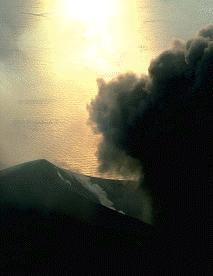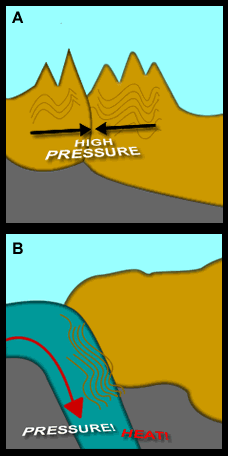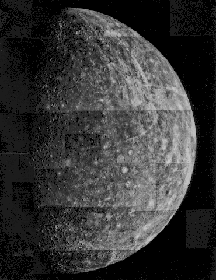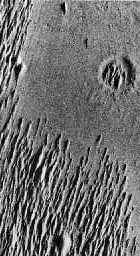This is an image of the Martian dunefields.
Click on image for full size
NASA
What causes a Planet's surface to change?
Over the course of time there are many things which can cause the surface of a planet to change its appearance.
In their earliest histories, every planet & moon was hit with the leftover material from their start. If a planet's surface does not show many craters it is younger because it was not around while the planet was being hit. If the planet's surface still shows many craters, they are left over from it's beginning, and the surface is very old.
You might also be interested in:

How did life evolve on Earth? The answer to this question can help us understand our past and prepare for our future. Although evolution provides credible and reliable answers, polls show that many people turn away from science, seeking other explanations with which they are more comfortable.
...more
Over time, rocks wear away just like your favorite jeans or the bottom of your shoes. This is called weathering. There are two ways that it can happen. Either rocks wear away chemically, or they physically
...more
Volcanoes bring material from the deep interior of a planet and spilling it onto the surface. Eruptions of volcanoes also put new molecules into the atmosphere. Volcanism is part of the process by which
...more
This picture of the lunar maria shows the difference betwen the highlands, which are heavily cratered, and the dark maria which are relatively smooth with few craters. The absence of craters indicates
...more
Sometimes rocks are metamorphosed over large areas that are the size of many states or even several countries. This is called regional metamorphism. How could this happen? What force has the power to
...more
In addition to being hot, the surface of the Earth was being cratered. Even though the solar system was finished forming, there were still probably a lot of debris around. This debris was still able leave
...more
For many planets, such as Mercury which is shown here, pictures show that there are lots of craters. The craters were formed early in the history of the planet. Because there are so many craters, scientists
...more
This is an example of the cratered surface of Mars. Almost all of the surface of Mars is covered with craters. Craters can be wiped out over time, so a surface which has many craters is very old. The lowlands
...more














